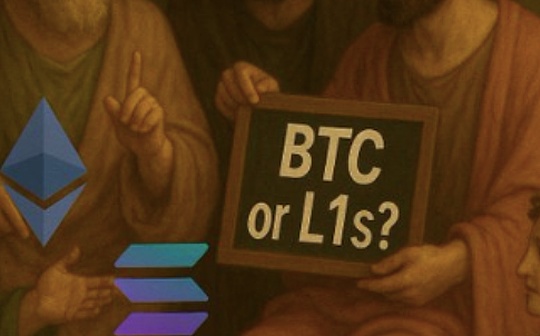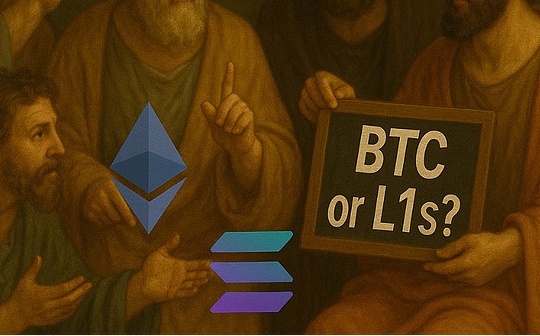
Author: larry sukernik & amp; myles o’Neill Source:ARKSTREAM Capital Translation: Good Ouba, Bit Chain Vision
“If you can see yourself in my eyes” -” LOST “from Dermot Kennedy”
We spent a lot of time on Reverie to study and then pledge agreement.This is an exciting investment field for us, because everything is not clear (the opportunity exists in a blurred market), and many projects are underway (dozens of projects will be pledged in the next 12 months to pledge againThe field is online).
As part of our research and pledge, we found some observations on the development of the market in the next few years.
These are all emerging things, so today’s facts may not be established tomorrow.However, we still want to share some commercial dynamic observations about the pledged market.
LRT as a leverage
Today, LRTs like Etherfi/Renzo occupy a strong position in the pledged supply chain: because they are close to the supplier (pledker) and the demand party (AVS)EssenceIf you consider it carefully, this gives LRT capabilities (i) to determine their drawing rate, and (ii) affects the drawing rate of the basic market (for example, EIGENLAYER, Symbiotic).In view of its strong status, you can expect the re -pledge market to launch its own LRT to control the power of third -party LRT.
AVS/Re -Purer as a leverage point
Two characteristics of the world’s best market sharing: fragmented suppliers and fragmented demanders.To form an intuitive understanding of this, it will help to see the opposite situation of any or both parties in the market.
Imagine a simple Apple market, the largest Apple seller controls more than 50%of Apple supply.In this case, if the market operator decides to increase the market’s drawing rate from 5%to 10%, large apple sellers can threaten his business elsewhere.
Similarly, in terms of demand, if the largest Apple buyer controls more than 50%of Apple demand, she can threaten the use of another market (or buy directly from Apple suppliers), if market operators increase the market’s outcome.
Back to the re -pledge market, if the final market structure of the re -pledged market is concentrated at the AVS end (the top 10%of AVS accounts for more than 50%of the income) or the concentration of the pledker terminal (the top 10%of the pledgers account for more than 50%or moreThe result of the natural result is that the market has reduced the ability to extract for its own (therefore, lower valuations should be required).
Although there are not enough data to conduct strict analysis, our intuition is that the power law will be applied here: Large AVS will become most of the capacity of hair payment, so that the market has the right to negotiate in terms of the market that eventually wants to collect.
Fight for exclusive AVS
From the perspective of each pledge market, each opportunity is worthy of fighting for some competitors to pledge the market that cannot be done.As a re -pledge market, the easiest way to differentiate is to provide exclusive AVS access permissions for re -pledges -whether it is a third -party AVS like EIGENDA or an exclusive partnership.In concept, this is similar to Sony’s development of PS5 monopolized games to promote hardware sales.
Due to these dynamics, we expect that the pledge market will launch more exclusive agreements with AVS and/or third -party AVS.In short, we will see the competition for AVS in the next few months.
AVS subsidy
AVS needs to pay the service fee provided by operators/re -pledges, which actually means that AVS needs to be prepared to pay for its original currency, ETH/USDC or possible points/future airdrops.Having said that, since most AVS so far is an early start -up company without tokens, large balance sheets or good design/airdrops, the process of signing a contract operator/rebuiltMost EIGENLAYER partnership is a customized contract agreement for private negotiation).In short, this is a kind of customer who wants to buy services and may have the ability to pay, but there is no money at present.
In order to promote business development, the pledged market is likely to “prepaid” start -up expenses to operators/re -pledges. Whether it is through its native currency, balance sheet assets, or issuing AVS, it can be used to pay operators/re -pledges.”Cloud accumulation”.As a return on the prepaid funding, it is expected that AVS will promise to allocate the re -pledged market airdrop/token allocation.Or, the pledge market can advance this money to AVS to persuade it to choose you instead of the re -pledged market.
In short, we expect the pledged market to compete fiercely through subsidized AVS expenditures in the next 12-24 months.Similar to the market dynamics of Uber/Lyft, the re -pledge market with the most funds/tokens may eventually become a winner.
White gloves entering service
From “I want to start a AVS” to the actual investment in production, it seems difficult, especially for small teams with not much R & D capabilities.Examples that the team needs to solve includes how much security should be purchased, how long to buy, how much money should be paid to operators/pledges, why should be punished and how much punishment should be punished.
The best practice will eventually appear, but at present, the pledge market needs to guide the AVS team to solve these problems (it is worth noting that Eigenlayer has not paid or punish the mechanism).
To this end, we expect that the resurrection market that wins will be a bit like an enterprise sales business, providing customers with white glove integration/service help to help them enter their own products.
Graduate from the market
An interesting dynamics is that the most successful AVS may “graduate” from pledged markets to use its own tokens/income to purchase security guarantees.
Today, the attractiveness of the pledge is mainly due to smaller projects. These projects (i) have no time/funds/brand/relationship to recruit authentication sets, and (ii) does not have a high -value tokens to ensure network security.However, as the project grows, one possibility is that their next step is to leave the market and recruit their own validators, and use their higher value tokens to ensure safety.
In concept, the most successful customer will eventually leave the market.However, for market operators, this kind of customer loss is bad news, because you lose a customer (this is why the valuation/multiple of the appointment market is lower than those who have reused/low -loss markets.one).
One -stop encryption SaaS
To explain this observation, let us understand some software history: cloud providers like AWS allow developers to easily access everything required for starting applications or network services (for example, hosting, storage and calculation).By significantly reduced the cost and time required for development software, a new type of network services have appeared, which are more professional in service provision.The combination of a large number of “microservices” provided by the first cloud service and the platform makes cloud providers a one -stop store required for all the core business logic.
The re -pledge market like Eigenlayer aims to create a similar batch of microservices for Web3.Prior to Eigenlayer, encrypted microservices can choose to concentrate their offline components (and pass this risk to their customers), or bear the cost of starting a group of operators and economic pledge to purchase security guarantees.
If the re -pledge market runs as expected, they may break the trade -off of microservices -you will be able to give priority to safety without sacrificing costs and listing speed.
Suppose you are developing a cheap, high-performance ZK-Rollup.If you go to the re -pledge market like Eigenlayer, you will have multiple core services (such as DA and bridge) to facilitate settlement.Through this process, you will see many other AVS microservices, you can integrate.
The more microservices provided by the pledge market, the better the customer experience -instead of evaluating the service functions and security of dozens of independent suppliers. Applications will be able to purchase all the services required to buy from one re -pledge market.Because the service X came, it was left because of service Y and Z.
Some avs will produce network effects (such as pre -configuration)
So far, the use cases of re -pledges are mainly concentrated in exporting Ethereum’s verification device and economic rights.However, there are another type of re -pledge cases focusing on “internal”, which can actually add functions to the Ethereum consensus without changing the agreement.
This idea is very simple -you allow the verifications to choose to make additional commitments to the blocks they proposed to pay for payment. If they do not comply with these commitments, they will be responsible by cutting them.We suspect that only a few promise types have sufficient demand to obtain high -level participation, but the value of flowing through these commitments may be huge.
Unlike the “external” re -pledged examples, the effectiveness of such cases is directly related to the participation of the verification.In other words, even if you are willing to pay to join the block, if only one of each of the 10 verifications choose to obey the promise, then it is not very useful.
However, if each verificationer chooses a given commitment, the guarantee behind it will be equal to the guarantee provided by the Ethereum protocol itself (that is, effective block).According to this logic, we can expect that this category has a strong network effect, because AVS users benefit from each marginal verification of the promise market.
Although this AVS category is still emerging, the logical distribution channels that promote these use cases will be through the Ethereum client Sidecar and plug -in (eg Ryte).Similar to the proposalist and the builder, the proposal is likely to outsourcing this work to specialized participants in exchange for income sharing.
What is not clear is what form these AVS will adopt.Although a entity may create a general market for any type of promise, we suspect that it is more likely that we see the appearance of some participants who specialize according to the source of demand (for example, L2 and L2 and interoperable L2 and interoperability.L1 for DEFI -driven needs).
Conclusion
For students with business strategies, the business dynamics of the market is a treasure trove worthy of in -depth research.As you may see from the content above, we have gained a lot of fun in the process of deepening these projects.







